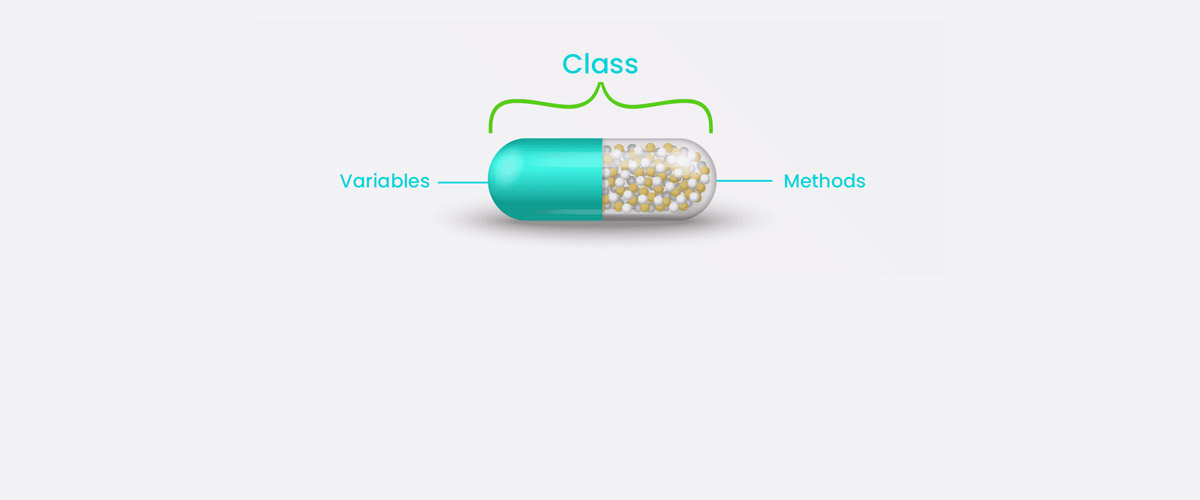In the world of software development, encapsulation is a fundamental concept that plays a crucial role in building robust, maintainable, and scalable applications. Encapsulation is one of the four pillars of object-oriented programming (OOP), along with inheritance, polymorphism, and abstraction. It provides a mechanism to bundle related data and methods into a single unit, known as a class, and restricts direct access to the internal state of an object.
This article aims to explore the importance of encapsulation in software development and demonstrate its practical benefits through code examples written in PHP.
Understanding Encapsulation
Encapsulation is a concept that promotes data hiding and ensures that an object’s internal state is accessible only through a well-defined interface. It helps create modular and reusable code by separating implementation details from the external usage of an object. In OOP, a class encapsulates both data (attributes) and behavior (methods) within a cohesive unit.
By encapsulating data, we protect it from direct manipulation, allowing controlled access through methods or properties. This protects the integrity of the object’s state and ensures that it remains consistent throughout its lifecycle. Encapsulation also provides a level of abstraction, as the internal implementation details of an object are hidden from external entities.
Benefits of Encapsulation
Data Hiding and Access Control
Encapsulation facilitates data hiding, which means that the internal state of an object is hidden from the outside world. The class defines the boundaries within which data can be accessed and manipulated. This prevents external entities from making unauthorized changes to the object’s internal state, promoting data integrity and reducing the risk of introducing bugs.
In PHP, encapsulation is achieved using access modifiers: public, private, and protected. Public members are accessible from anywhere, while private members can only be accessed within the class itself. Protected members, on the other hand, allow access within the class and its subclasses. Let’s illustrate this with a code example:
class Employee {
private $name;
protected $salary;
public function getName() {
return $this->name;
}
public function setName($name) {
$this->name = $name;
}
public function getSalary() {
return $this->salary;
}
public function setSalary($salary) {
$this->salary = $salary;
}
}
$employee = new Employee();
$employee->setName("John Doe");
$employee->setSalary(5000);
echo $employee->getName(); // Output: John Doe
echo $employee->getSalary(); // Output: 5000In this example, the name property is marked as private, and the salary property is marked as protected. This means that external code cannot directly access these properties. Instead, the class provides public getter and setter methods to access and modify the encapsulated data.
How to improve it?
class Employee {
private $name;
private $salary;
public function __construct($name, $salary) {
$this->name = $name;
$this->salary = $salary;
}
public function hasCompetitiveSalary() {
return $this->salary >= Salary::MIN_COMPETITIVE_AMOUNT ;
}
}In this alternative implementation, the Employee class sets the name and salary directly through the constructor. The constructor takes the name and salary as parameters and initializes the respective properties.
We don’t have access to the encapsulated data, instead, the class provides a public method hasCompetitiveSalary(). This method compares the employee’s salary to determine its competitivity.
By omitting the setters, the encapsulated data becomes unavailable after the object is created. This approach protects the state of the object and exposes only public methods that do something using the object’s state.
Using this implementation, you can create an Employee object and ask it to do something for you:
$employee = new Employee("John Doe", 5000);
if($employee->hasCompetitiveSalary()) {
// ...
}This implementation adheres to the principle of encapsulation by hiding the internal state of an object and providing useful methods (not setters and getters).
Code Maintainability and Reusability
Encapsulation plays a vital role in code maintainability and reusability. By encapsulating related data and behavior within a class, we create self-contained units that are easier to understand, modify, and extend. Changes to the internal implementation of a class do not affect the code that uses the class, as long as the public interface remains unchanged. This enables developers to update or optimize the implementation of a class without impacting other parts of the application.
Moreover, encapsulation promotes code reuse. Once a class is encapsulated properly, it can be easily reused in different parts of an application or even in other projects. The class provides a clear interface and hides the implementation details, making it easier to integrate into different contexts. This leads to more modular and maintainable codebases.
Encapsulation and Object-Oriented Design
Encapsulation is closely tied to the principles of object-oriented design. It encourages the creation of objects that represent real-world entities or concepts and encapsulates both their data and behavior. By encapsulating related data and methods within an object, we achieve a higher level of abstraction and modeling, which aligns well with the way humans perceive and interact with the world.
Through encapsulation, objects become the building blocks of an application’s architecture. They interact with each other by invoking methods and exchanging messages, while their internal implementation remains hidden. This promotes loose coupling between objects, allowing for better modularization and flexibility in the system design.
Encapsulation and Information Hiding
Information hiding is a principle closely associated with encapsulation. It emphasizes the idea that an object should reveal only what is necessary for other objects to interact with it while keeping its internal details hidden. This helps manage complexity and reduces the impact of changes in one part of the system on other parts.
Encapsulation enables selective exposure of the object’s internals by defining public methods and properties that provide controlled access to the encapsulated data. This ensures that the object’s internal state remains consistent and avoids exposing unnecessary implementation details. By controlling the access to data, we can enforce constraints, perform validation, and maintain data integrity.
Encapsulation and Security
Encapsulation also plays a significant role in software security. By restricting direct access to an object’s internal state, we reduce the chances of unauthorized modifications or data breaches. By encapsulating sensitive data within objects and enforcing access control through methods, we can apply security measures such as input validation, encryption, and access restrictions.
For example, consider a user authentication system that encapsulates user credentials and provides methods to validate and authenticate users. By encapsulating the password within the user object and ensuring it is not directly accessible, we can apply hashing and salting techniques to protect sensitive information from being compromised.
Best Practices for Encapsulation
To make the most of encapsulation, it is essential to follow certain best practices:
- Identify and encapsulate related data and behavior within classes.
- Use access modifiers (public, private, and protected) to control access to class members.
- Provide well-defined public interfaces through methods and properties, hiding implementation details.
- Avoid exposing internal data directly to external code.
- Validate and sanitize data within the class before exposing it externally.
- Keep classes small and focused, adhering to the Single Responsibility Principle.
- Use design patterns, such as the Factory or Builder pattern, to encapsulate complex object creation or configuration.
By following these practices, developers can create codebases that are easier to understand, maintain, and extend.
Conclusion
Encapsulation is a fundamental concept in software development, particularly in object-oriented programming. It provides a mechanism to bundle related data and behavior within classes, promoting data hiding, information hiding, and controlled access to an object’s internal state. Encapsulation enhances code maintainability, reusability, and security, while also aligning with the principles of object-oriented design.
In this article, we explored the importance of encapsulation in software development and provided code examples written in PHP to illustrate its practical benefits. By embracing encapsulation and adhering to best practices, developers can build more robust, modular, and secure applications that are easier to maintain and extend.
Encapsulation is a powerful tool in the hands of software engineers, allowing them to create well-designed and maintainable code that can stand the test of time. Embrace encapsulation, and you’ll be on your way to writing cleaner, more efficient, and highly maintainable software.
Want to read more about encapsulation?


